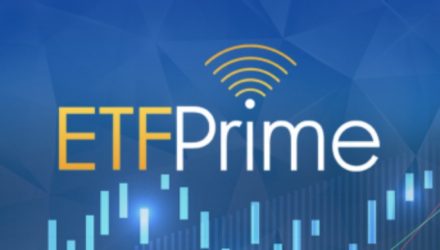On this week’s ETF Prime, host Nate Geraci sat down with VettaFi chief product and innovation officer Tom Hendrickson to discuss the ten most researched ETFs of the year and Factset’s director of global funds research Elisabeth Kashner for an in-depth look at ETF flows and the fee landscape.
Hendrickson and Geraci went over the top ten researched ETFs on VettaFi’s platform, using a criteria for an ETF to be considered “researched” that requires someone specifically searching for the ticker using the site’s tools. The two did a top ten list “David Letterman” style, counting down from number ten.
Despite being down over 50% this year, researchers are still kicking the tires on ARKK. “ARKK is both interesting and somewhat perplexing because of the performance story,” Hendrickson said, “but as investors and advisors embrace the Cathie Wood strategy and lean into this innovative growth theme, it’s showing the staying power.” Geraci thinks investors like this fund because they know what they are getting – disruptive tech stocks.
9. Invesco Optimum Yield Diversified Commodity Strategy No K-1 ETF (PDBC)
8. Invesco DB Agriculture Fund (DBA)
Despite recent pullbacks, commodities have been one of the biggest stories this year. Discussing the appeal of commodities, Hendrickson noted that “this is a reflection of something we hear all the time from our survey data, specifically with the advisor community, is that inflation and rising rates are one of the biggest concerns, and how to counteract any negative headwinds.” PDBC and DBA weren’t in the top 25 in prior years, indicating how investors are mitigating risk in the current market environment.
7. Proshares Ultra Pro QQQ ETF (TQQQ)
TQQQ is down over 60% YTD but has invested 9 billion in inflows. This is a fund with daily 3x exposure to the Nasdaq 100. It provides daily exposure and isn’t necessarily a long-term play as a leveraged and inverse product. With retail investors buying the tech dip, TQQQ has garnered a lot of attention.
6. Vanguard Information Technology ETF (VGT)
With a decade of enormous returns in large cap tech stocks and many of those same stocks down 20% or more, Hendrickson thinks that many investors are looking for ways to play an inevitable rebound. He also noted that the Vanguard team “does a great job educating their userbase on the long-term nature of their holdings.”
5. Energy Select Sector SPDR Fund (XLE)
Considering energy’s performance this year, XLE’s appearance on this list is not surprising. Hendrickson noted last year clean energy funds occupied this spot in 2021, “There’s an ongoing debate about how to gain exposure to energy in general and is there more of a transition element and a clean element or is there more of a traditional exposure because that has performed quite well in 2022.” Despite the impressive research numbers, XLE has seen outflows, which Hendrickson attributes to the growing number of highly specific, granular funds that might draw investors away from a broader sector exposure. XLE is up 40% annually after being up 70% in June.
The Top 4
Geraci saw similarities in the top four funds, and he and Hendrickson discussed them as a bundle. They are:
4. Vanguard Total Stock Market ETF (VTI)
All four of these funds are core portfolio building blocks, as well as four of the five biggest ETFs out there. Hendrickson sees the research into these funds as evidence of a sophisticated user base that understands that media likes to talk about hotter strategies that might veer more toward being satellite positions in a portfolio. Hendrickson said, “At the end of the day, I love your saying, Nate, that the best portfolio for an investor is one they will stick with. Because ultimately that’s going to deliver the long-term nature of what they are looking for in terms of exposure and their ability to ride the emotional rollercoaster up and down.”
Kashner Talks Flows and Cost
Elisabeth Kashner recently published two pieces and joined Nate to discuss them in the show’s second half. H1 2022 ETF FLOWS: STEADFAST, BRAVE…AND FOOLHARDY? and Cheapest ETFs Make Bear Markets a Bit Less Painful. These two pieces share a common thread, one of the reasons we’re seeing so many flows into ETFs this yere poor market performance is because of ETF’s low cost.
Geraci shared a stat from one of these pieces, namely, “First half 2022 ETF flows of 332 billion exceed the full year inflows for every year from 1993-2016. They also nearly match the full year inflows from 2018 and 2019.”
Kashner noted that investors chased performance in 2020 and 2021, “this year those dollars have gone away, and we’re seeing very different behaviors.” Equity flows are driving the ETF markets, and Kashner said we’re on track for the second highest ever annual equity flows. 2020 and 2021 saw lots of flows into sector flows, this year, sector funds saw outflows while size and style, as well as high dividend yielding funds, picked up the inflow slack.
Lots of inflows went into TQQQ, which lost over 70% in the first half of the year, and the Direxion Daily Semiconductor Bull 3x Shares (SOXL), another leveraged fund. Kashner quipped that “People got punished in crypto and perhaps developed a taste for hot chili peppers on the tongue and figured out ‘well, where else can I get punished?'”
Geraci pivoted the conversation over to fees, noting a stat from Kashner’s piece that the asset-weighted average weighted expense ratio for all ETFs was just 18 basis points.
“Long story short, some are starting at a higher level than others, but they’re all moving in the same direction, which is to say downward,” Kashner said. She noted that actively managed funds fell nine basis points on the year. “The fee compression of active management and active equity has been staggering.”
Listen to the entire episode of ETF Prime with Tom Hendrickson:
For more ETF Prime podcast episodes, visit our ETF Prime channel.

